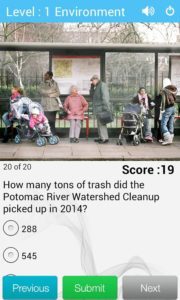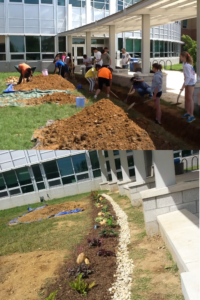2014 Washington, DC, USA

After spending the year learning about the Anacostia River Watershed and the varied environmental issues that it faces, sixth grade students at the SEED School of Washington wanted to share their knowledge with the rest of the school. The last week of April, the students facilitated “Watershed Awareness Week”, during which they went to various classes explaining the importance of watersheds and the impact we have on them. Additionally, the students placed signs around campus encouraging people to recycle, painted rain barrels, and handed out “Watershed Ambassador” buttons. The week culminated in the unveiling of the updated school garden that the students had been working on all year.
At the Caring for Our Watersheds finals, students shared examples of the posters and buttons they had created and pictures of their vegetable garden. Their project won 2nd place in the 2014 Caring for Our Watersheds competition.














